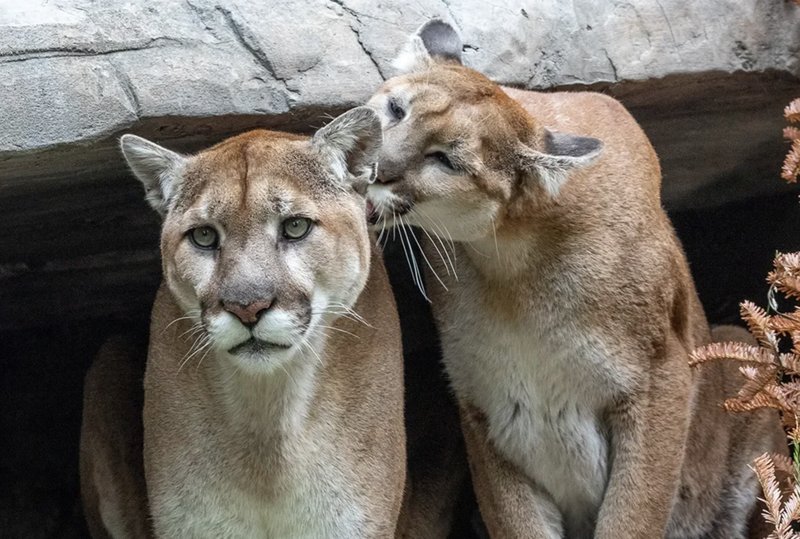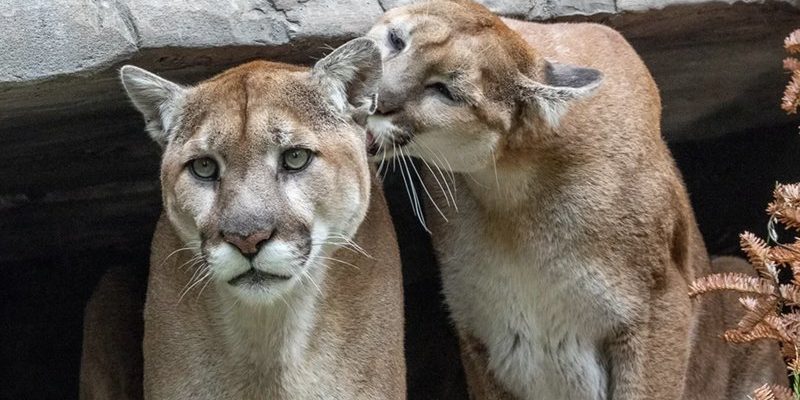
Imagine discussing mountain lions over coffee, trying to unravel the facts from the fables. You might hear stories about cougars lurking behind every tree or a cautionary tale that warns against hiking alone. But just like that old wives’ tale about how you shouldn’t swim after eating, many of these stories about mountain lions simply aren’t true. So, grab your favorite mug, and let’s dive deeper into the common myths and misconceptions about mountain lions.
Myth 1: Mountain Lions Are Dangerous to Humans
One of the biggest myths surrounding mountain lions is the notion that they are a significant threat to humans. The truth? Attacks on people are extremely rare. Statistically, you have a better chance of being struck by lightning than becoming a mountain lion’s next meal.
Here’s the thing—mountain lions are more likely to avoid humans than confront them. They’re stealthy, solitary hunters that typically prefer to stalk deer, their primary prey, rather than engage with people. In fact, according to various wildlife organizations, there have been fewer than 30 fatal attacks in North America in the last century. That’s a tiny number considering how many people live and hike in mountain lion territory.
So, if you’re out hiking or enjoying a picnic in the woods, it’s good to be aware but don’t let the fear of mountain lions keep you from enjoying nature. They want to avoid us, just as much as we want to avoid them!
Myth 2: Mountain Lions Are Only Found in the Mountains
You might think that mountain lions are, well, only found in the mountains, but that’s not the case! These adaptable animals can thrive in a variety of environments, from deserts to forests, and even suburban areas.
Mountain lions love their space and will roam significant distances—sometimes up to 150 miles—in search of food and territory. Their range can extend into valleys, foothills, and even backyards, especially in areas where their natural habitat overlaps with human development. This adaptability is a major reason why they’ve been able to survive and thrive over the years, even when faced with habitat loss.
So, don’t be surprised if you hear about a mountain lion sighting in your area. They’re not just relegated to high altitudes; they’re using their cunning to find food and shelter wherever they can.
Myth 3: Mountain Lions Are Always Solitary
It’s commonly believed that mountain lions are lone wolves—well, lone cats. But while they do prefer a solitary lifestyle, they aren’t completely anti-social. Male mountain lions tend to have larger territories than females, and they might overlap with several females in their area.
Interestingly, during mating season, these big cats can come together to mate, but afterward, the males go back to their solitary ways. Talk about a brief encounter! Moreover, mothers will often raise their cubs together, allowing for some social behavior during their early development.
So, while it’s true that you’ll rarely spot a mountain lion in a group, they do have social interactions, especially when it comes to breeding and raising their young.
Myth 4: Mountain Lions Are Relentless Pursuers of Humans
You might picture mountain lions stealthily hunting humans like they do with deer, but the reality is quite different. These cats are not relentless pursuers; they are opportunistic hunters that avoid confrontation. Unlike big cats like lions or tigers, mountain lions do not hunt in packs or chase down large prey like humans.
When they do engage with humans, it’s typically out of self-defense, or in rare cases, they may feel threatened. Otherwise, they’ll choose to flee rather than fight. Their natural hunting style involves stalking and ambushing their prey—something they do best with animals in their natural environment.
So, if you encounter a mountain lion, it’s much more likely they’ll take off than stand their ground. Instead of being a relentless predator, they’re more of a ghost in the woods—hardly ever seen and even less often confrontational.
Myth 5: Mountain Lions Only Hunt at Night
Another widespread belief is that mountain lions are strictly nocturnal hunters, prowling under the cover of darkness. While it’s true that they are most active at dusk and dawn, they’re not limited to just nighttime hunting.
Mountain lions can be active throughout the day as well, especially in areas where human activity is minimal. They are crepuscular hunters, which means they prefer the hours just before sunset and just after sunrise. This timing helps them take advantage of the natural behavior of their prey, often coinciding with when deer are most active.
Being adaptable, mountain lions will hunt whenever the opportunity arises, whether under the bright sun or in the quiet of the night. So, don’t be surprised if you hear stories of daytime sightings or hunting activity!
Myth 6: Mountain Lions Are Easy to Spot
You might think with a name like “mountain lion,” spotting one would be a cinch—but these big cats are masters of camouflage! Their coat, a mix of tawny and gray, allows them to blend seamlessly into their natural environments, from rocky landscapes to dense forests.
Mountain lions are incredibly stealthy. They use their keen eyesight, hearing, and incredible agility to navigate their surroundings and approach prey without being seen. This is why most people might live near mountain lion territory without ever spotting one.
So, if you’re hoping to get a glimpse of a mountain lion in the wild, you’ll need a bit of luck and a lot of patience. They’re not just hiding—they’re experts at playing hide and seek!
Myth 7: Mountain Lions Are a Sign of a Healthy Ecosystem
While it’s true that mountain lions play a critical role in the ecosystem, suggesting their presence indicates a healthy environment is somewhat misleading. Mountain lions help control the population of deer and other prey species, which can, in turn, benefit plant life and other animals.
However, just because you see a mountain lion doesn’t automatically mean the ecosystem is thriving. Environmental changes, habitat destruction, and human encroachment can lead to unstable ecosystems, making it harder for these cats to find food and safe habitats.
It’s essential to recognize that while mountain lions contribute to ecosystem balance, their presence alone is not a definitive sign of overall health. Efforts to preserve their habitats and ensure biodiversity are crucial for maintaining the ecological balance.
Mountain lions, with their graceful movements and mysterious ways, are often surrounded by myths and misinformation. From misconceptions about their danger to our human encounters to their elusive nature, understanding mountain lions can help foster a better relationship with this magnificent animal.
The next time you hear a story about these big cats, take a moment to digest the information. Remember, they’re not the relentless hunters or solitary ghosts that myths might suggest. They are important residents of our North American landscapes.
So, whether you’re a nature enthusiast or just a curious friend looking to learn more, keep these truths in mind about mountain lions, and appreciate the incredible role they play in our ecosystems. After all, getting to know these fascinating creatures is part of the journey of understanding our natural world, and who knows—maybe your next hike will lead you to a breathtaking (but safe) encounter with one of these majestic cats!

